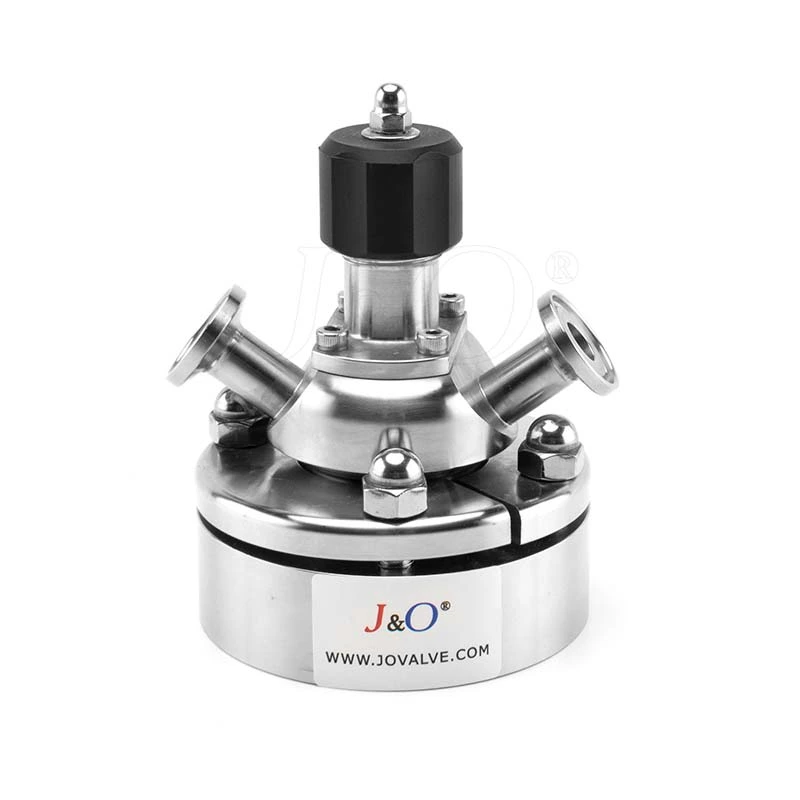How To Adjust And Verify The Sterile Sampling Valve
Sanitary Sampling Valve is mainly used to take samples from tanks or pipeline systems under sterile conditions. Sterilization can be performed before or after each sampling. It is mainly used in beer, wine, dairy products, beverages, pharmaceuticals and chemical industries. It can be remotely controlled by a drive device or manually operated by a handle. It is mainly composed of a sealing rubber sleeve, a sample chamber, a sampling port, a stainless steel ejector pin, a spring, an ejector sleeve, and a manual rotary handle (the difference between an automatic aseptic sampling valve and a manual one is whether a pneumatic device is used. The basic principle is the same. Normally, aseptic sampling valves are equipped with sampling port heads of appropriate sizes).
The working principle of the aseptic sampling valve is as follows: when it is in the closed state, the ejector pin is pushed by spring tension or other pressure, and the ejector pin presses the sealing rubber head against the opening of the tank wall to achieve a sealing effect; if sampling is required, steam or other sterilizing medium is introduced from one of the sampling ports (usually the lower one) to fill the entire sample chamber and drain it from the other sampling port. After a certain period of time, the sample chamber and the sampling port are in a sterile state; then the handle is turned to shrink the spring and release the ejector pin, so that the sealing rubber head is separated from the opening on the tank wall, so that the sample flows out of the tank through the sample chamber and is collected from the sampling port; after the sampling is completed, the handle is turned to release the spring, and the sealing rubber head is pressed against the opening of the tank wall again by the ejector pin; clean water is introduced to discharge the residual liquid in the sample chamber (if the sample is a relatively clean medium such as sterile water, this step can be omitted), and then the sterilizing medium is injected to seal and retain it for the next sampling.
Adjustment and calibration method of sanitary aseptic sampling valve:
1. On the gas test bench, adjust the load applied to the valve disc to calibrate the opening pressure of the sanitary aseptic sampling valve. Lever-type sanitary valves adjust the position of the weight, and spring-type sanitary valves adjust the spring compression. The opening pressure of sanitary valves should comply with the relevant provisions of the safety technical supervision regulations for boilers and pressure vessels.
2. On the container, adjust the discharge pressure and return pressure of the sanitary valve by adjusting the gap between the sanitary valve adjustment ring and the valve disc. If the sanitary valve only leaks under the opening pressure but does not jump, or if it jumps but there is a violent vibration and "buzzing" sound after the pressure drops, the gap is too large and should be adjusted smaller. If the return pressure is too low, the gap of the adjustment ring is too small and should be appropriately increased. The discharge pressure of the sanitary valve for steam should be less than or equal to 1.03 times the opening pressure, and the opening and closing pressure difference should not be greater than 10% of the opening pressure. The discharge pressure of sanitary valves for air or other gases should be less than or equal to 1.10 times the opening pressure, and the opening and closing pressure difference should not be greater than 15% of the opening pressure.
3. When the sanitary aseptic sampling valve is calibrated and the pressure is adjusted, the technical personnel in charge of boiler pressure vessel safety of the user unit must be present. The accuracy of the pressure gauge used for adjustment and calibration should not be lower than level 1. Safety protection measures should be taken during online calibration.
4. During the calibration process, the calibrator should keep records in time. The sanitary valves that have passed the calibration should be sealed with lead after the relevant accessories are installed to prevent the adjusted state from being changed at will.
